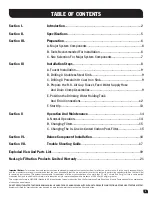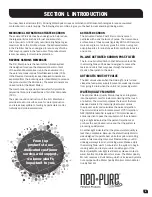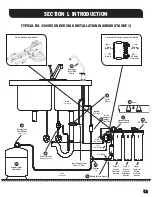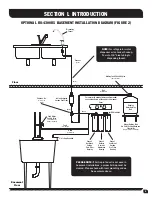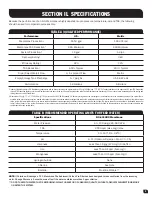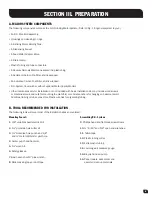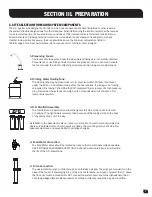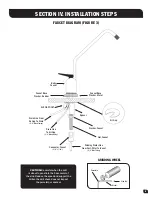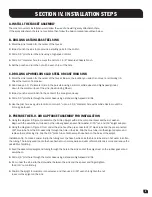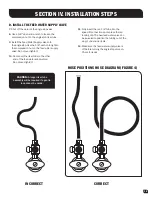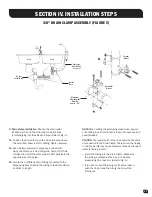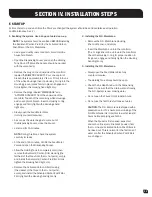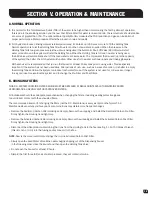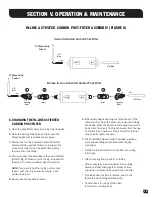
A. NORMAL OPERATION
SECTION V. OPERATION & MAINTENANCE
1.
It is normal for the Total Dissolved Solids (TDS) of the water to be higher than normal during the first 5 gallons of operation;
this is due to the sanitizing solution and the new Post-Filters. After this water is rinsed to drain, the removal rate should stabilize
at a value of greater than 75%. The optional Water Quality Monitor measures the TDS reduction and gives an indication of
proper performance. Water pressure affects the production rate and quality.
2.
R.O. Systems produce drinking water at relatively slow rates; it can take up to 5 hours or more to fill the Holding Tank.
Normal operation is to let the Holding Tank fill with water and then draw water as needed. When the pressure in the
Holding Tank falls to a given pressure (as the water is being used) the Automatic Shut–Off Valve (ASO Valve) will start
water production and the system will refill the Holding Tank. When the Holding Tank is full and no water is being used,
the ASO Valve will automatically shut off the feed water to conserve water. The more water that is used (up to the capacity
of the system) the better the R.O. System will function. Other uses for the water are flowers, pets and rinsing glassware.
With each use it is recommended that you run the faucet for at least 10 seconds prior to using water. This is especially
important if the system has not been used daily. After periods of non–use, such as a week of vacation, it is better to empty
the Holding Tank and allow the system to produce fresh water for use. If the system is not used for 3–4 weeks or longer,
it is a good idea to re-sanitize the system and to change the Pre-Filter and Post-Filters.
B. CHANGING FILTERS
THIS R.O. SYSTEM CONTAINS FILTERS WHICH MUST BE REPLACED AT REGULAR INTERVALS TO MAINTAIN PROPER
PERFORMANCE. USE ONLY FACTORY APPROVED FILTERS.
All individuals should take adequate precautions when changing the filters, including wearing protective gloves,
to avoid direct contact with the exhausted filters.
The recommended interval for changing the filters (not the R.O. Membrane) is every six (6) months. Typical T.F.C.
Membrane life expectancy is three years. Local conditions may dictate more frequent changes.
• Remove the Sediment/Carbon Filter Housing and empty. Remove the wrapping and install the Sediment/Carbon Pre-Filter.
Firmly tighten the Housing hand tight only.
• Remove the Activated Carbon Filter Housing and empty. Remove the wrapping and install the Activated Carbon Post-Filter.
Firmly tighten the Housing hand tight only.
• Disconnect the white product water tubing that runs from the Holding Tank to the Tee (see Fig. 1.). Put 50 drops of bleach
(this is ½ tsp. or 3 ml) into the tubing and reconnect it to the Tee.
NOTE:
Now is the convenient time to change the In–Line Activated Carbon Post-Filter.
• Slowly open the Feed Water Valve. When water begins dripping out of the Dispensing Faucet,
in the following order, close the Faucet and then open the Holding Tank Valve.
• Do not open the Faucet for at least 8 hours.
• Discard the first three full tanks of water produced, they will contain chlorine.
14


